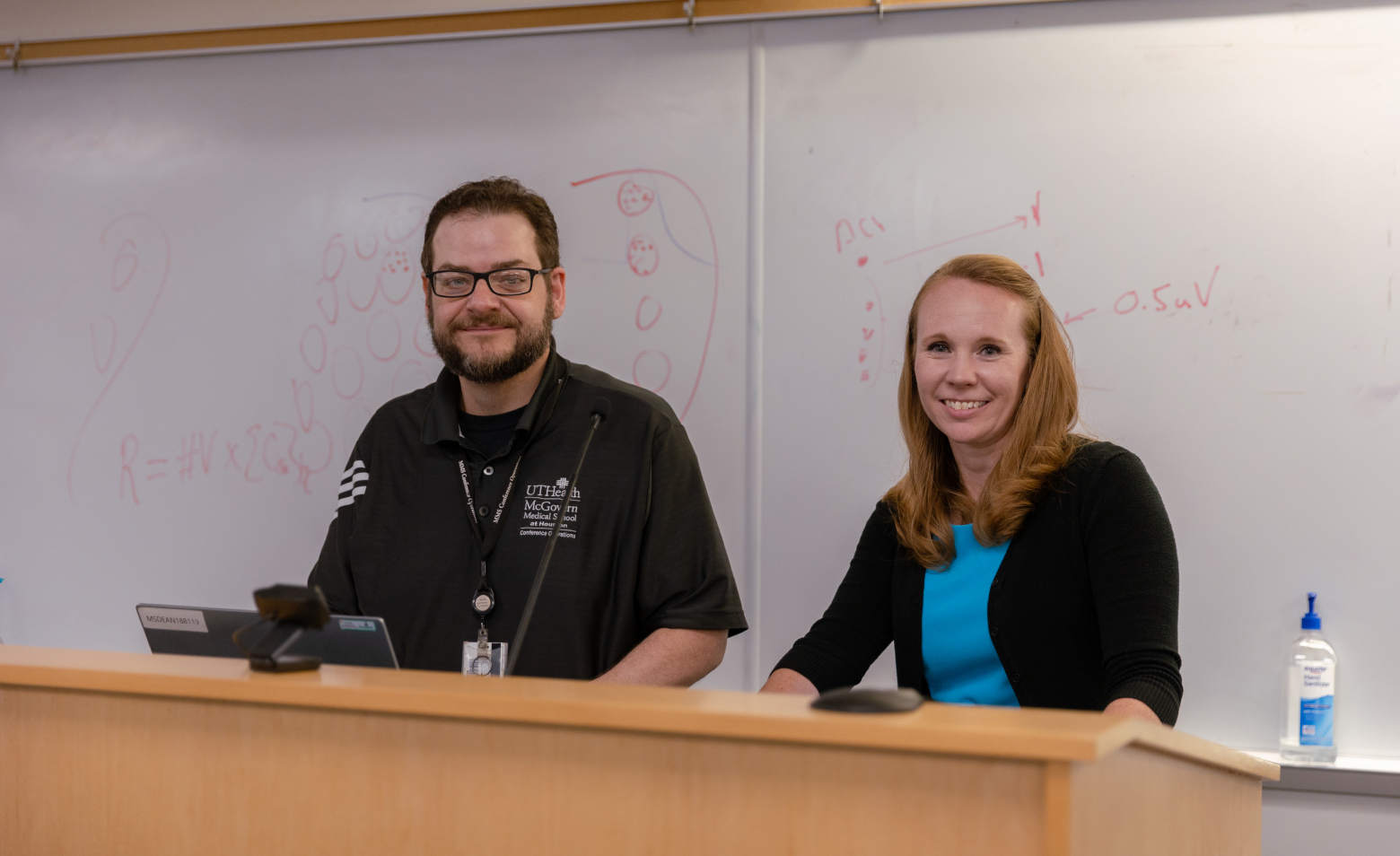While many faculty and staff members shifted to working remotely during the COVID-19 pandemic, IT quickly retooled with an unprecedented support effort to quadruple access to the virtual private network (VPN), providing a digital lifeline from remote locations to work. IT was able to swiftly revamp its systems and procedures to accommodate the special circumstances of the pandemic.
It was a true overhaul as meetings shifted online to Cisco’s Webex platform, and as time went on, the university experienced an increase in the use of Zoom. Today, the university has pushed Microsoft Teams into the forefront as its preferred method of online meeting communication.
When the COVID-19 pandemic forced UTHealth Houston IT to implement new work procedures, the department quickly adapted its IT Solution Center responses and security procedures to support employees working from living rooms, back patios, and kitchens. IT fine-tuned its security measures, pushing out updates to include remote locations and shortening computers’ time-out screens.

IT was there to support the steep learning curve while everyone got familiar with the software and adapted meeting skills. Leading and participating in a virtual meeting was an entirely new experience for many.
On the hardware side, IT bought 123 computers that were due to be returned on their lease and reimaged them to make them available to employees who needed a computer to work from home. Conference rooms throughout McGovern Medical School at UTHealth Houston were refitted to accommodate new technology, as people expected to be able to hear everyone in a room during an online meeting—not just a main speaker.
IT also ramped up its asset inventory process, tracking down hardware, computers, and monitors leaving the building. Moving forward, the IT team is focused on transitioning the university work culture away from Webex, into a Microsoft Teams-first workspace.
IT Security increased efforts to educate the UTHealth Houston community about the risks of cyberattacks in response to an escalation in phishing emails. Simulations were created as training exercises on how to recognize and report phishing emails, while IT Security also worked with the Office of Public Affairs to send out tips in the weekly Insider newsletter to reach users across various communication channels. The simulations have resulted in a significant improvement in our community's ability to recognize phishing.
Suspected phishing emails submitted to IT Security by the university community
Phishing email incidents that get through and require an IT Security alert (Most alerts are sent within 30 minutes.)
Email accounts compromised due to phishing (Most account compromises are detected and remediated within one hour.)
The IT Infrastructure team has begun to transition away from the Avaya desk phone system to Microsoft Teams Voice. The move will save the university $1 million annually after project completion in 2025.
The plan is to continue to remove physical phones and enable technology that allows for the maintenance of phone services through computers or personal smartphones. The transition effort will need to support more than 13,000 clients. As of mid-2023, the department had migrated 3,300 users, including UTHealth Houston School of Public Health and UTHealth Houston School of Dentistry. The goal is to have 6,000+ users migrated by the end of 2024.